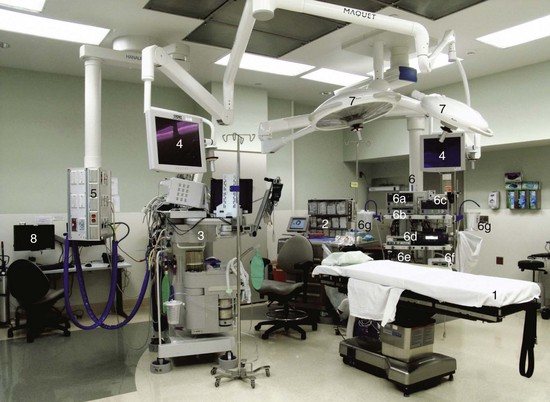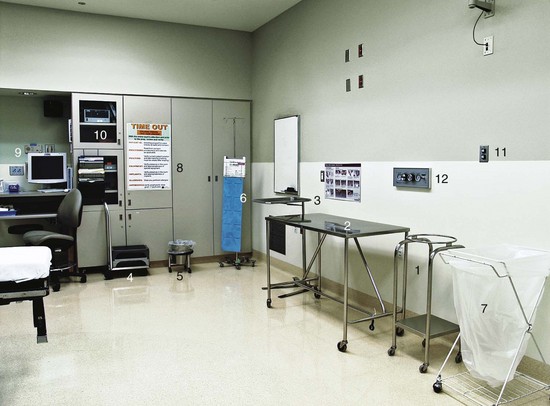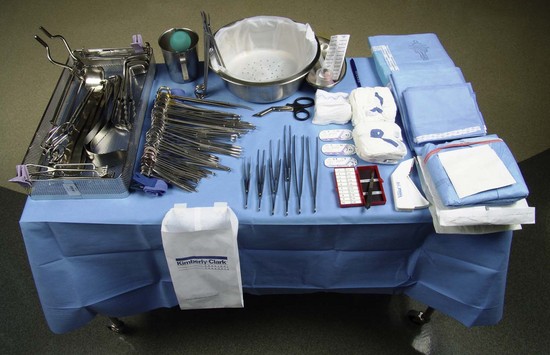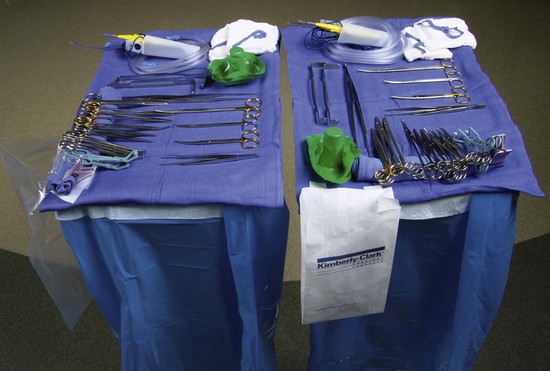CHAPTER 3 3-1 Operating room (OR) equipment: 1, OR table; 2, secure medication distribution cart (i.e., Pyxis); 3, anesthesia machine; 4, endoscopic/camera monitor; 5, anesthesia boom; 6, OR boom; 6a, light source; 6b, camera; 6c, insufflator and insufflation warmer; 6d, service-specific equipment (i.e., Midas Rex ArthroCare); 6e, electrical surgical unit; 6f, tourniquet; 6g, suction; 7, surgical lights; 8, physician resource station/desk (i.e., EMR, x-rays). 3-3 Operating room equipment: 1, ring stand; 2, back table; 3, Mayo stand; 4, surgical step lifts; 5, sponge bucket; 6, sponge count bags; 7, garbage; 8, timeout briefing/debriefing poster; 9, nurses’ station/desk; 10, integration/video equipment (i.e., printer); 11, stop/start clock; 12, nitrogen regulator. A laparotomy is an incision into the abdominal cavity for the purpose of exploration or the performance of an operative procedure on organs or structures within. 1. A Bard-Parker scalpel handle #4 with a #20 blade, used for the skin incision. 2. A Bard-Parker scalpel handle #3 with a #10 blade, used for the abdominal layers. 3. 2 Ferris Smith tissue forceps, used for grasping the abdominal layers. 4. A curved Mayo dissecting scissors, used for the dissection. 5. A straight Mayo dissecting scissors, used for cutting the suture. 6. 6 straight Crile hemostatic forceps, used for clamping the bleeders. 7. 6 curved Crile hemostatic forceps, used for clamping bleeders in the deeper abdomen. 8. 2 Army Navy retractors, used for retracting the abdominal layers. 9. 2 small Richardson retractors, used for retracting the abdominal layers.
Operating Room Suite/Basic Laparotomy


![]() Additional images are available at: evolve.elsevier.com/Tighe/instrumentation/
Additional images are available at: evolve.elsevier.com/Tighe/instrumentation/
Stay updated, free articles. Join our Telegram channel

Full access? Get Clinical Tree





